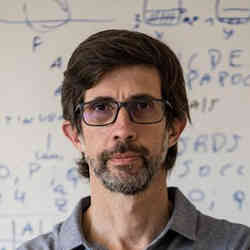
For most scientists, paper authorship is essential for career development. Even the ordering of authors within a paper can lead to infighting or silent grudges. Sometimes the fight is to be acknowledged as an author, regardless of the position. After some years in the publish or perish game, most of us have seen cases where team members got authorship with minimal involvement in the work, and, more sadly, cases where members had crucial roles in the research, and even in the writing, and still didn't make it to the list upon submission.
What is an author?
In a single-author text (such as this one) we can assume a lot about the process. If we rule out the increasingly likely help of an AI (or a human ghostwriter), then we know that that person wrote the text and that it read the text (hopefully multiple times). We can also assume that it did the underlying research, although history is full of cases of unacknowledged research and hidden figures.
In the multi-author case, all these assumptions start to break. A name listed as a co-author might well be a fictional person, like Camille Noûs. It can be a real person, usually with a prestigious affiliation, who has no idea she was listed as an author and just added to improve the paper's credibility. See this interesting blog post by Elisabeth Bik on false affiliation and fake authors; and this article on how unearned authorship pervades science.
More interestingly, and increasingly likely, a co-author can be someone who writes and reads very fast and possibly does not sleep. This affliction even has a name: Hyperprolific. But is that person really an author?
Hyperprolific authors
A hyperprolific author is an author that publishes one paper every five days or less, i.e. more than 72 papers per year, as defined in this study by John Ioannidis et al. In some cases there is a simple explanation, such as a series of papers that derive results from a long study that collected significant amounts of data and where the authors are likely credited for their role in the data collection.
However, in other cases, the explanation is not so benign. Quoting from such a study:
"We did observe that some authors seemed to become hyperprolific on becoming full professors, department chairs or both. …There was also often a sharp decrease after passing the chair to a successor."
Somehow, hyperprolific authors are becoming more common. From their sample, the study identified 4 in 2002, 39 in 2008, and 81 in 2016. I am sure that with the widespread availability of large language models, these marks will keep being improved.
Now that we are questioning what an author is, it's about time to try to look for a definition.
An author definition
The International Committee of Medical Journal Editors (ICJME) defined a litmus test to help authors assess if they qualify as such. The definition is general enough and not field-specific, so it's applicable to our field. Before describing their definition, it can be interesting to present some situations that, by themselves, should not grant authorship:
- Someone being the head of the research group or the department
- Being a colleague in the same lab and making excellent coffee
- Having, mainly, collected the funding for the research
- Fixing typos and grammar (sorry Grammarly, but thanks for the help)
The ICJME definition is the following (quoting):
- Substantial contributions to the conception or design of the work; or the acquisition, analysis, or interpretation of data for the work; AND
- Drafting the work or revising it critically for important intellectual content; AND
- Final approval of the version to be published; AND
- Agreement to be accountable for all aspects of the work in ensuring that questions related to the accuracy or integrity of any part of the work are appropriately investigated and resolved.
It can look obvious, after the fact, but given the complexity of modern tools and collaboration networks, it is always useful to recall the basics.
Note: This small text took a lot more than 5 days to plan, write, pause for other urgent work, resume writing, read, re-write, read again, show to colleagues, revise, and submit.
References
Unearned authorship pervades science
Defining the role of authors and contributors
Thousands of scientists publish a paper every five days
Authorship wars: academics outline the rules for recognition
What constitutes authorship? COPE Discussion Document
Carlos Baquero is a professor in the Department of Informatics Engineering within the Faculty of Engineering at Portugal's Porto University, and also is affiliated with INESC TEC. His research is focused on distributed systems and algorithms.



Join the Discussion (0)
Become a Member or Sign In to Post a Comment